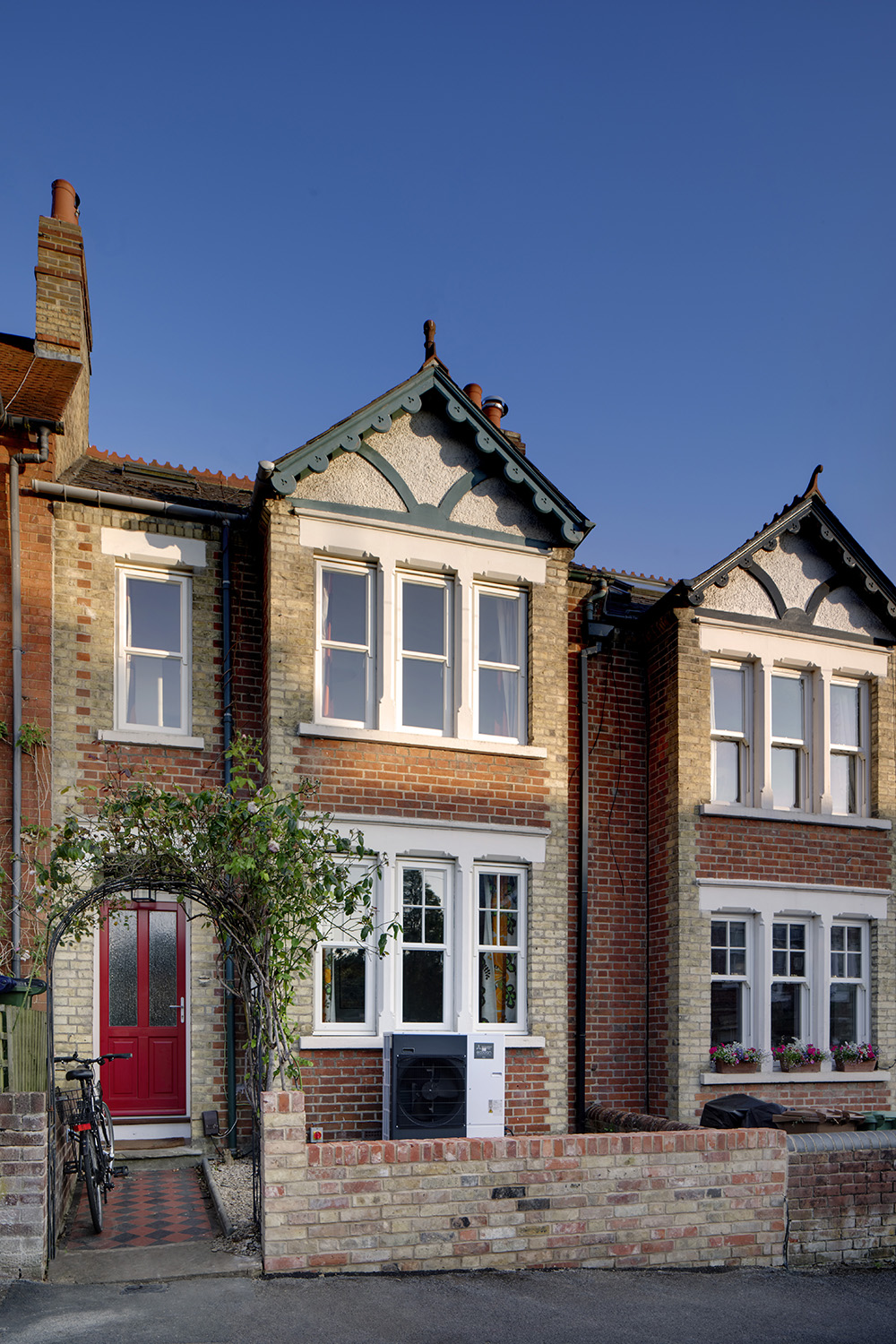A large part of what we do at Sow Space is the retrofit of existing buildings. And wherever possible, we aim to do this using natural, rather than synthetic, materials. Materials such as timber, hemp, wool, straw, cork, cellulose, lime and clay have a wide range of advantages over man-made materials like PIR, expanded polystyrene and modern renders. A common assumption is that because synthetics often have the lowest thermal conductivity (λ value), and can therefore produce the lowest U-value, they will achieve the best outcome – but there are other things to consider…
Breathability and moisture regulation
When we retrofit, alongside improving the thermal performance of the building fabric, we also need to think about moisture. The critical issue is to prevent water and water vapour, which is inevitably present both outside and inside all buildings – arising from activities such as cooking, washing, even just breathing! – from condensing and building up within the fabric of the building. Buildings that fail to properly account for moisture often have issues with mould and damp, perform worse thermally, have poorer indoor air quality, and ultimately are worse for our comfort and health.
High levels of airtightness and appropriate barrier layers can help to prevent moisture getting into structural elements, but it will always be important to facilitate the capacity of any structure to dry out. Natural insulation materials such as wood fibre, wool and hemp are inherently breathable or vapour permeable – much more so than their synthetic equivalents. These qualities allow the transfer of moisture out of the building fabric, and reduce the risk of it accumulating within. This is particularly important in the context of older buildings, as traditional building materials are generally very moisture-open, and rely on being able to dry out during warmer, dryer periods. Retrofitting with materials such as PIR or EPS interferes with this regulatory process, potentially creating or worsening issues with damp in the long term.
Natural finishes also have a role here, as plasters and renders made from lime and clay have high hygroscopicity – the ability to take up and release moisture. When humidity rises within a building they are able to absorb moisture from the air, acting as a buffer to regulate and stabilise the internal environment, in turn reducing the risk of moisture finding its way deeper into the building fabric. Externally, lime renders are able to wick moisture away from structural elements and aid the drying-out process, in a way that even ‘breathable’ modern renders cannot. Lime is also alkaline, and so provides an inhospitable environment for the growth of mould and mildew, which prefer a much lower pH.
Data gathered from environmental monitoring at our Bedford Street deep retrofit clearly illustrates the importance of ensuring breathability when working with historic buildings. Prior to work, the relative humidity (RH) of this Edwardian terraced property was sitting at an average of 47%. This would be expected to rise with the improved airtightness created by retrofitting, but it was important that humidity be kept within the recommended 40-60% zone. After insulating with appropriately moisture-open materials – including woodfibre and lime plaster finishes, post-use data showed the RH to have risen by an average of just 5%, keeping it well within safe levels.
Specific heat capacity and thermal mass
The specific heat capacity of a material is the measure of how much heat energy is required to raise its temperature by a given amount, or how much heat that material is able to store. Insulators with high thermal storage capacity are not just good at keeping the heat in during winter, but also act to prevent overheating during summer – as simply put, they take longer to heat up. The higher density and mass of natural insulation materials make them much better in this regard than synthetics – wood fibre, for instance, has almost double the specific heat capacity of EPS. Slower uptake and release of heat means these materials also help to regulate internal temperatures in warmer months, as the building structure will generally only begin to release heat accumulated during the day after external temperatures start to drop at night.
The benefits of high thermal storage capacity are seen in action at our retrofit at The Orchard, Eynsham. This 19th century, hard-to-heat cottage had a particular issue with sloping ceilings on the first floor, which would be hot to touch in the summer months – effectively acting as giant radiators at times when heating was needed the least! After retrofitting with wood fibre insulation, these problem areas stayed cool even during hot spells, while thermal comfort in the house year round was greatly improved. A similar story is told by the data gathered at Bedford Street, where a night-time drop in temperature of 10 degrees prior to work was reduced to just 2 degrees post-retrofit.
Sustainability and embodied carbon
If environmental impact is an important motivator for your retrofit, then natural is the right way to go. Insulating with any material should reduce future energy consumption – the operational carbon footprint of your home. But the carbon embodied in synthetic insulators (the energy consumed by production and manufacture) means that the whole-life carbon footprint may be detrimentally impacted. In contrast, natural insulators such as wood fibre, hemp, and straw, absorb carbon as they grow. When we insulate with these products, this sequestered carbon is locked up within the building fabric – helping to take the whole-life carbon footprint of your building closer to net zero.
And there are reasons besides their advantages for retrofit to opt for natural materials: Lower levels of VOCs in the fabric of your home can mean a cleaner, healthier indoor air quality – wool is even able to absorb and lock up VOCs from other sources, effectively acting as an air purifier within your home. Natural materials provide good acoustic insulation, and the tactile, aesthetic qualities of materials such as cork and hemp panels make them promising options to consider internally if you’re looking to dampen noise. There are also ecological benefits to supporting the farming of crops such as hemp and cork: high resistance to pests and fungal disease means hemp requires little help from pesticides – with fields of this crop providing a haven for a rich tapestry of insect and bird life, while the managed cork forests of Portugal host some of the most biodiverse ecosystems outside of the Rainforest.
There will always be areas where it’s hard to avoid using synthetics – below ground where moisture levels are simply too high, where there is particular need for fire resistance, if space is very tight, etc. But whenever there is the option, we think natural materials often have the most to offer.






